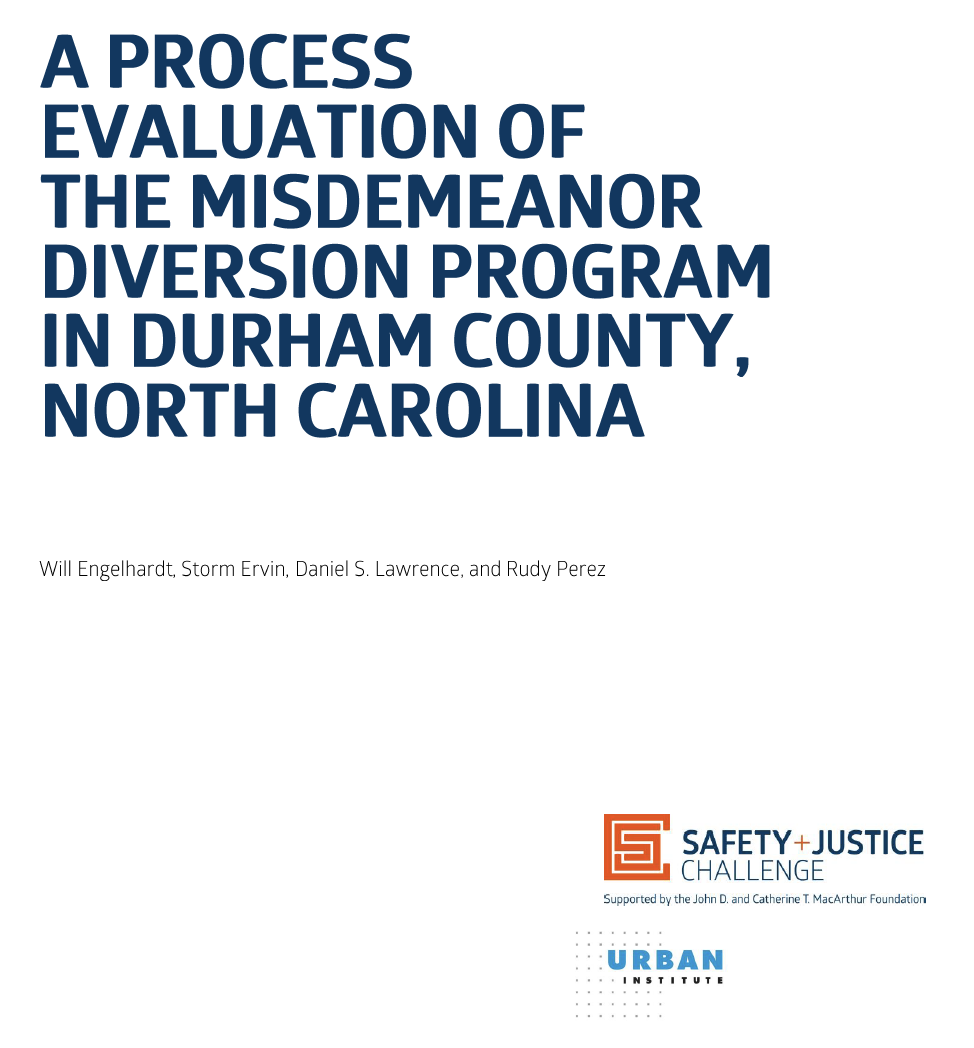Research Report
Diversion Young Adults July 7, 2021
A Process Evaluation of the Misdemeanor Diversion Program in Durham County, North Carolina
Before its Raise the Age legislation in December 2019, North Carolina was one of the few states that still automatically charged 16- and 17-year-olds as adults in its justice system. In 2013, led by then–chief district court judge Marcia Morey, a group of stakeholders from Durham County, North Carolina, started the Misdemeanor Diversion Program (MDP) to prevent 16- and 17-year-olds from entering the justice system. The first of its kind in North Carolina, the program began in March 2014 and expanded over time to include people of all ages. It has also been replicated in certain counties throughout the state. The MDP allows law enforcement officers in Durham County to redirect people accused of committing their first misdemeanor crime(s) to community-based services in lieu of citation or arrest. The purpose is to diminish unnecessary arrests and time in jail, and the collateral consequences associated with being charged with and potentially convicted of a crime. What is particularly unique about this program is that it occurs prearrest and precharge, meaning someone law enforcement officers may believe has committed a crime is not arrested or charged and does not formally enter the justice system in any way. In 2020 and 2021, with support from the John D. and Catherine T. MacArthur Foundation’s Safety and Justice Challenge Research Consortium, the Urban Institute conducted an in-depth process evaluation of the MDP, the findings of which are detailed in this report. This process evaluation was one component of Urban’s research on the MDP; the research team is also conducting an outcome evaluation that will be described in a fall 2021 report.
